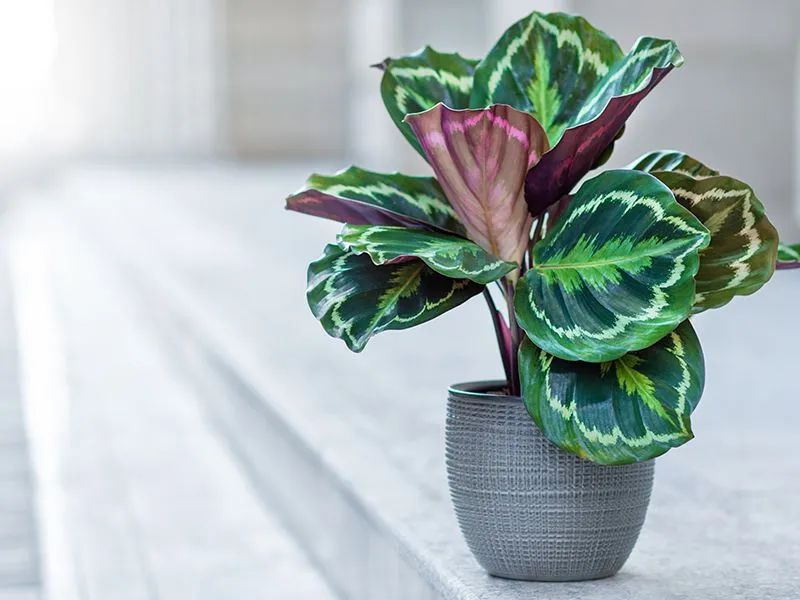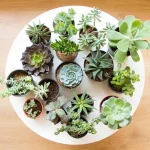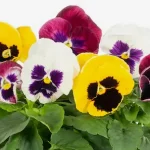A Complete Guide to Growing and Caring for Calathea Plants
Introduction
Calatheas, also known as prayer plants, are admired for their stunningly vibrant, patterned leaves. With foliage that features unique colors and intricate designs, they are the perfect addition to any indoor space. While they are relatively easy to care for, Calatheas have specific needs that must be met for them to thrive. In this guide, we’ll cover everything you need to know to grow and care for Calathea plants, whether indoors or in your garden, along with tips for managing common diseases and pests.
Overview
Calatheas belong to the Marantaceae family, originating from the tropical regions of South America. Known for their striking foliage, they display an incredible range of colors and patterns, from deep greens to purples, often with pink or white markings. One of the most interesting features of Calathea plants is their ability to move their leaves in response to light, “praying” at night and opening during the day.
These plants thrive in humid environments and prefer indirect sunlight, making them popular indoor plants. However, they can be sensitive to changes in water, light, and temperature, so they require a bit of attention. If you love plants that bring a pop of color to your space and are willing to give them proper care, Calatheas will reward you with their beauty.
Varieties of Calathea
There are many varieties of Calathea plants, each with its own unique pattern and coloration. Here are some popular varieties:
Calathea Orbifolia:
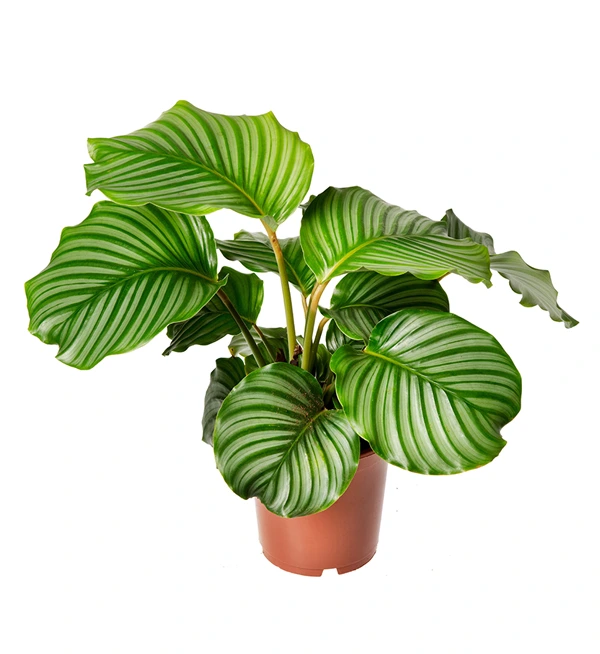
Known for its large, rounded leaves with silver-green stripes.
Calathea Roseopicta:
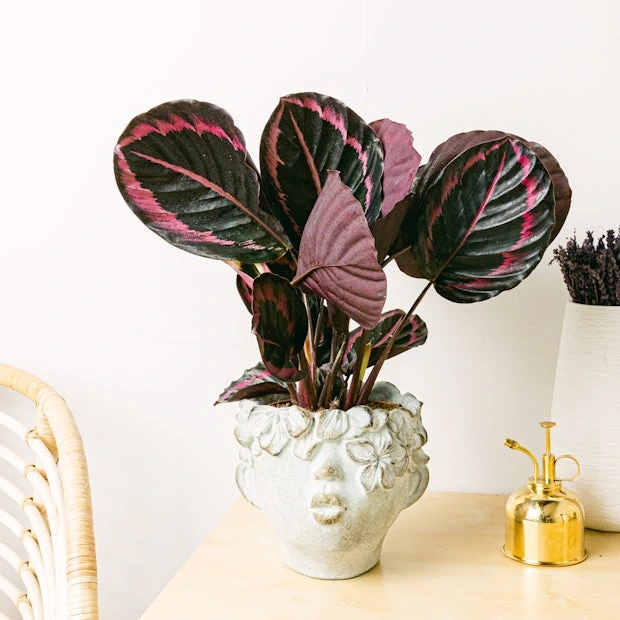
This variety features dark green leaves with bright pink to purple patterns.
Calathea Medallion:
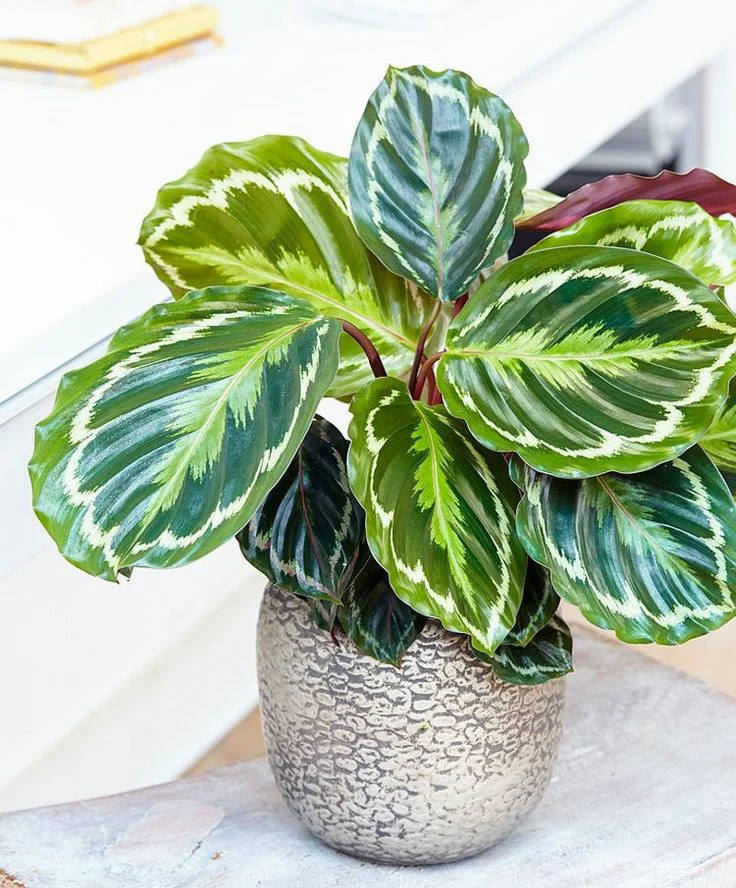
A favorite with its bold, dark green leaves contrasted by lighter green or silver centers.
Calathea Lancifolia (Rattlesnake Plant):
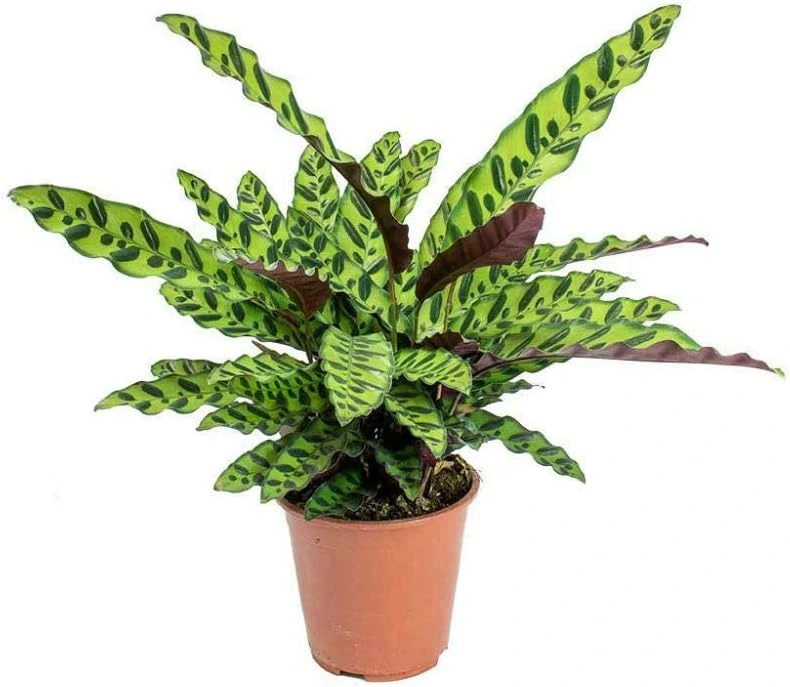
It has long, narrow leaves with a wavy edge and dark purple undersides.
Calathea Zebrina:
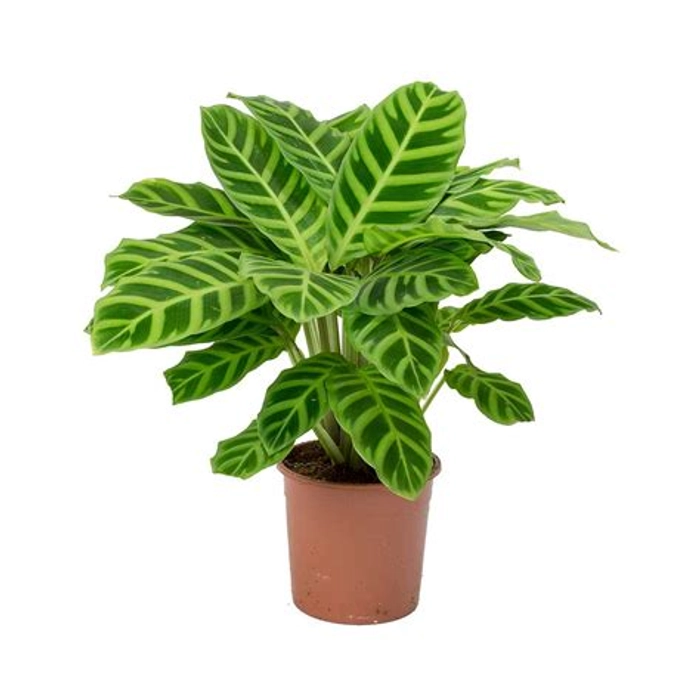
This plant is known for its velvety leaves and zebra-like stripes in shades of green.
Each variety brings its own unique flair to your home, making Calatheas a must-have for plant lovers.
Farming and Care for Calathea Plants
To ensure your Calathea plants grow healthily, you’ll need to pay attention to their care needs. Here’s a guide to keeping them thriving:
Lighting:
Calatheas prefer bright but indirect light. Direct sunlight can scorch their leaves, so it’s best to place them near a window that gets filtered light.
Watering:
Keep the soil consistently moist, but not soggy. Calatheas prefer distilled or rainwater as tap water may contain chemicals that can damage their leaves. Watering once the top inch of soil is dry is a good practice.
Humidity:
These tropical plants love humidity. Aim to keep the humidity level around 50-60%. You can mist the leaves, use a humidity tray, or place a humidifier nearby.
Temperature:
Calatheas prefer temperatures between 65-80°F (18-27°C). Keep them away from drafts, heaters, or air conditioners as temperature fluctuations can harm them.
Soil:
A well-draining potting mix is essential. Use a peat-based mix or one that is formulated for tropical plants. Ensure the pot has drainage holes to avoid waterlogging.
Fertilizing:
Feed your Calathea with a balanced liquid fertilizer every month during the growing season (spring and summer). Avoid over-fertilizing as this can lead to leaf burn.
Repotting:
Repot your Calathea every 1-2 years to refresh the soil and give the roots more space.
Common Diseases and Solutions for Calatheas
Despite their beauty, Calathea plants are prone to certain diseases and pests. Here are common issues and how to solve them:
Yellowing Leaves:
This is often a sign of overwatering. Make sure the soil dries out between waterings and that the plant isn’t sitting in water.
Crispy Leaf Edges:
Dry air or underwatering can cause the edges of the leaves to turn brown. Increase humidity around the plant and ensure it’s getting enough water.
Pests (Spider Mites, Aphids):
Calatheas are sometimes attacked by pests like spider mites. To control pests, regularly wipe down the leaves and use insecticidal soap or neem oil.
Fungal Infections:
Poor air circulation or overly wet soil can lead to root rot or fungal issues. Make sure your plant is in well-draining soil and that the air around it is moving freely.
How to Grow Calatheas Indoors
Growing Calatheas indoors is easy if you provide them with the right conditions. Here’s what you need to do:
Light:
Place the plant in a room with plenty of indirect sunlight. Avoid direct sunlight, as it can damage the leaves.
Humidity:
Keep the room’s humidity level high by misting the plant, using a pebble tray, or placing a humidifier nearby.
Temperature:
Keep the room’s temperature steady, ideally between 65-80°F (18-27°C). Avoid placing the plant near doors or windows that may cause drafts.
Watering:
Water the plant regularly with distilled water, ensuring the soil remains moist but not soggy.
Fertilizing:
Feed the plant monthly during the growing season with a weak, balanced fertilizer.
How to Grow Calatheas in a Garden
Calatheas are primarily grown as indoor plants, but in tropical or warm, humid climates, they can also be grown outdoors. Here’s how:
Location:
Choose a shaded spot in your garden that gets indirect sunlight. Direct sun can scorch the leaves, so ensure it’s well-protected.
Soil:
Plant in well-draining soil rich in organic matter to ensure good water retention without waterlogging.
Watering:
Water regularly, ensuring the soil stays moist but not oversaturated. Outdoor Calatheas may need more frequent watering due to natural evaporation.
Temperature:
Calatheas prefer a consistently warm climate. If you live in a region with cool winters, it’s best to keep them indoors during the colder months.
Fertilizing:
Fertilize the outdoor Calathea plant every month during the growing season with an organic fertilizer.
Health Benefits of Calathea Plants
While Calathea plants are not typically used for medicinal purposes, they offer several indirect health benefits:
Air Purification:
Like many houseplants, Calatheas help purify the air by removing toxins and improving overall air quality.
Stress Relief:
The calming and soothing effect of greenery can reduce stress and anxiety, especially in indoor spaces.
Aesthetic Appeal:
Calatheas add a touch of nature and elegance to any room, which can improve mental well-being and promote a relaxing environment.
FAQs About Calathea Plants
Why are my Calathea’s leaves curling?
Curling leaves are often a sign of underwatering or low humidity. Increase watering and humidity levels to resolve this issue.
Can I grow Calathea outdoors?
Yes, Calatheas can be grown outdoors in tropical or warm, humid climates. However, they should be placed in shaded areas to avoid direct sunlight.
Do Calathea plants flower?
While Calatheas can produce flowers, their blooms are not as striking as their foliage. They are primarily grown for their beautiful leaves.
How do I increase humidity for my indoor Calathea?
You can increase humidity by misting the plant regularly, using a pebble tray with water, or placing a humidifier nearby.
Why are the edges of my Calathea’s leaves turning brown?
Brown edges typically indicate low humidity or sensitivity to tap water. Try increasing humidity and switching to distilled or rainwater.
How often should I water my Calathea?
Water when the top inch of the soil feels dry. Make sure the plant’s soil stays consistently moist, but not waterlogged.
Conclusion
Calathea plants are a beautiful and rewarding addition to any indoor or outdoor space. With their unique patterns and vibrant colors, they can brighten up any room. While they require some specific care, such as high humidity and indirect light, they are relatively easy to maintain. By following the tips in this guide, you can enjoy the stunning beauty of Calathea plants for years to come.

